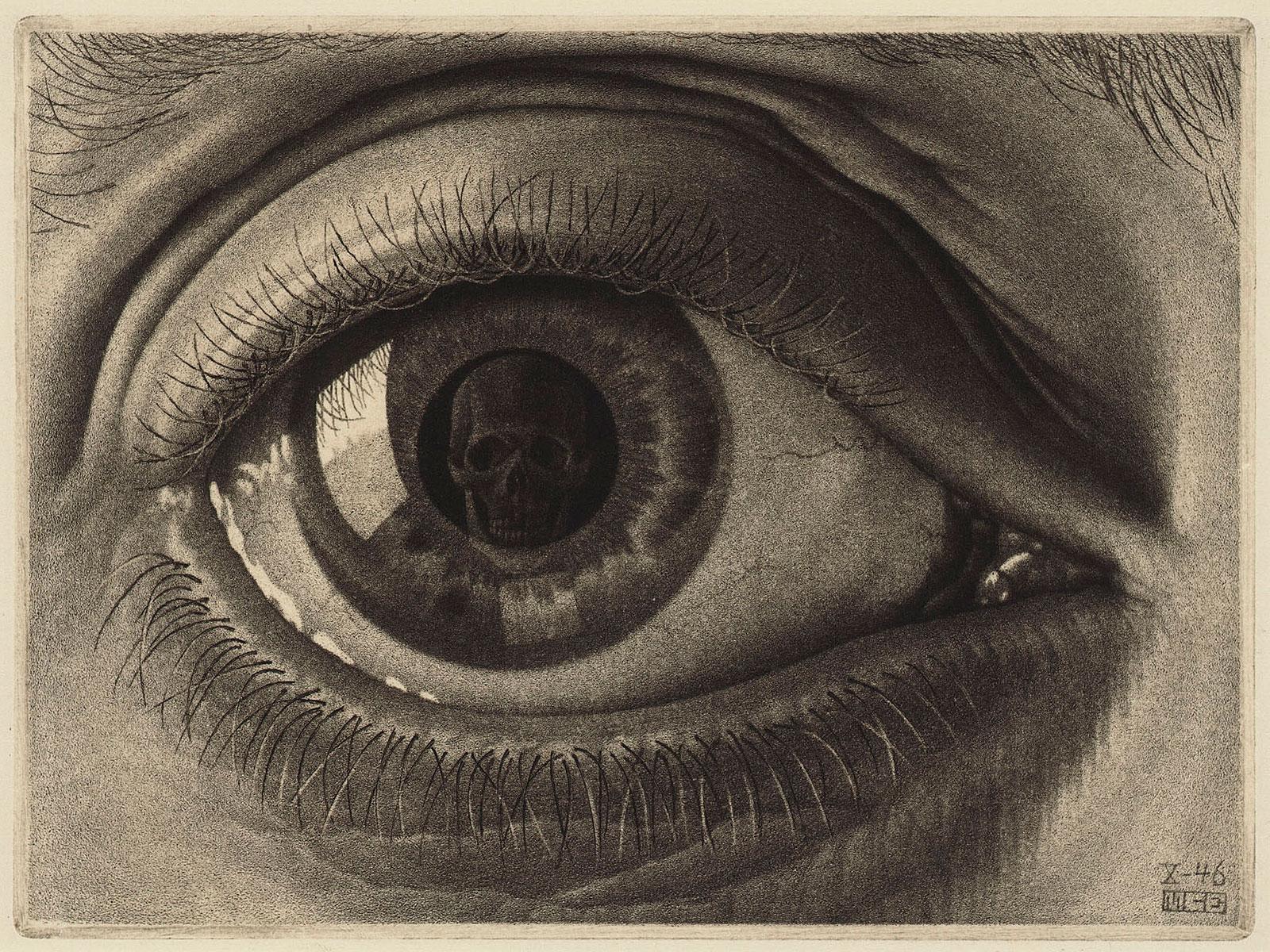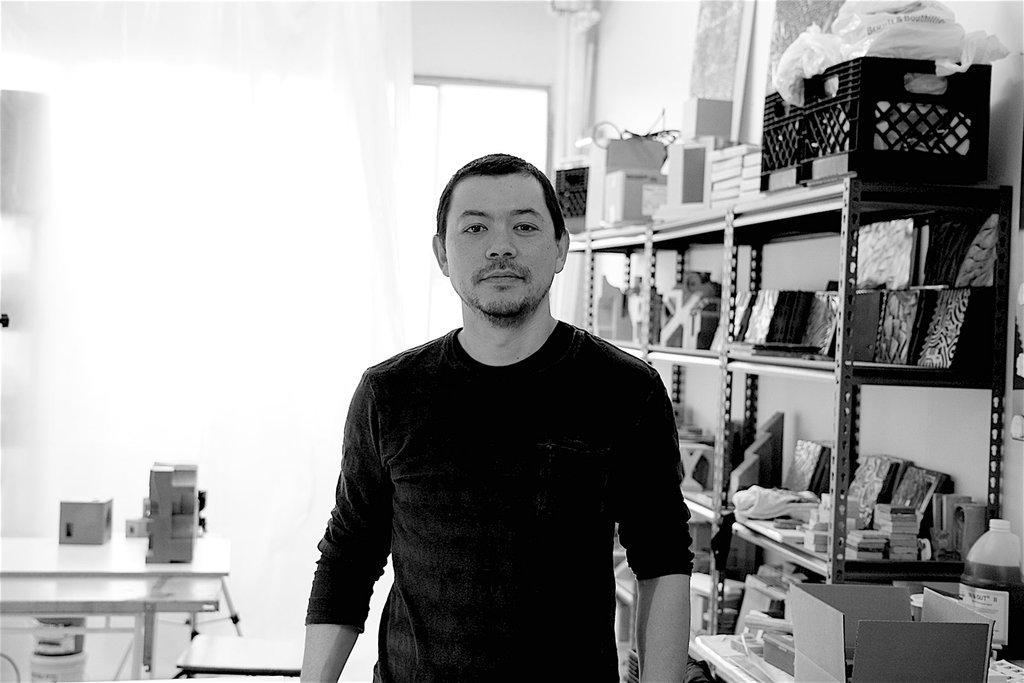

At the end of 1947, Escher produced a preliminary study and a print which typify how he sees the world: as an everlasting struggle between order and chaos. In his view, this was an observation of fact rather than a message or tribute to that world. He was fascinated by the regularity and inevitability of tight geometrical spatial figures, symbols of order in a chaotic world. Such figures initially appear simple and clear and yet are simultaneously mysterious and inscrutable. His half-brother Prof. Dr Berend George Escher, a geologist and crystallographer, shared his fascination, albeit from a professional point of view. Escher himself lacked a sound grasp of the underlying theories, but his naive fascination gave rise to some stunning work. From very small worlds (crystals) to very large (stars and planets). One of the prints embodying both of the brothers’ fascination is Crystal.
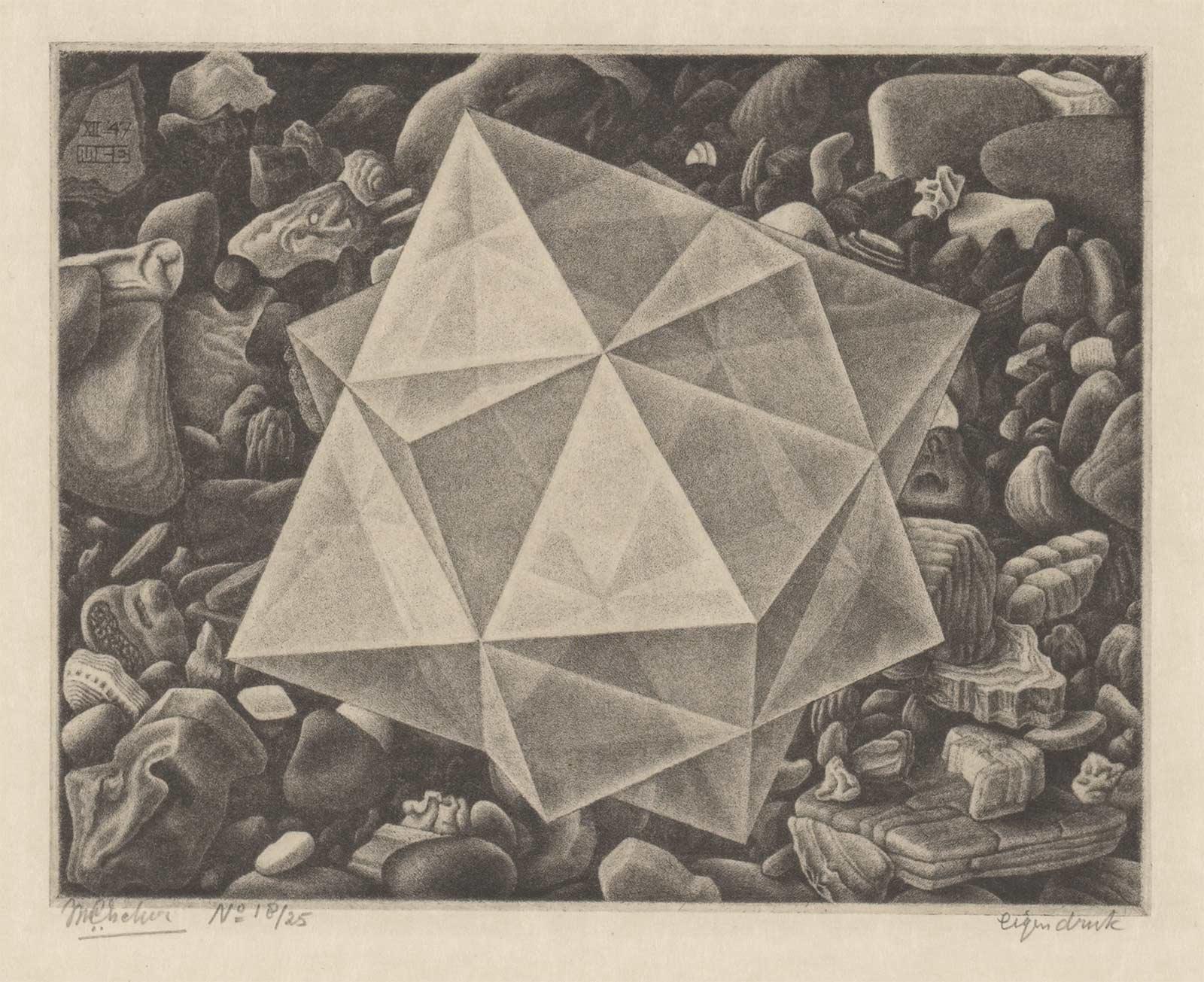
Crystal is one of the eight mezzotints that Escher produced in the years during which he worked with this technique. Another one is Eye (1946), a print he produced a year earlier and which seems to contain a great deal of covert symbolism. However, in the case of both Eye and Crystal Escher is clear in his rebuttal of the charge that the work might contain deeper significance. As he stated in a letter to his friend Bas Kist:
'An object like this always needs to have a name and so I called it Crystal. Because Order and Chaos sounds overly pretentious and bold, though that name would better express its purport. I should add that Chaos is ubiquitous in countless shapes and forms, whereas Order remains an unobtainable ideal—the sublime coalescence of cube and octahedron does not exist '*
Escher did eventually produce a print with the title Contrast (Order and Chaos) in 1950. And in 1955 he created the lithograph Order and Chaos II (Compass Card), a third work juxtaposing order and disorder. These prints focus on the contrast between the orderly mathematical object in the foreground and the chaos behind it. In the case of Crystal, that chaos is made up of many stones that have been moulded into all kinds of bizarre shape by the elements.
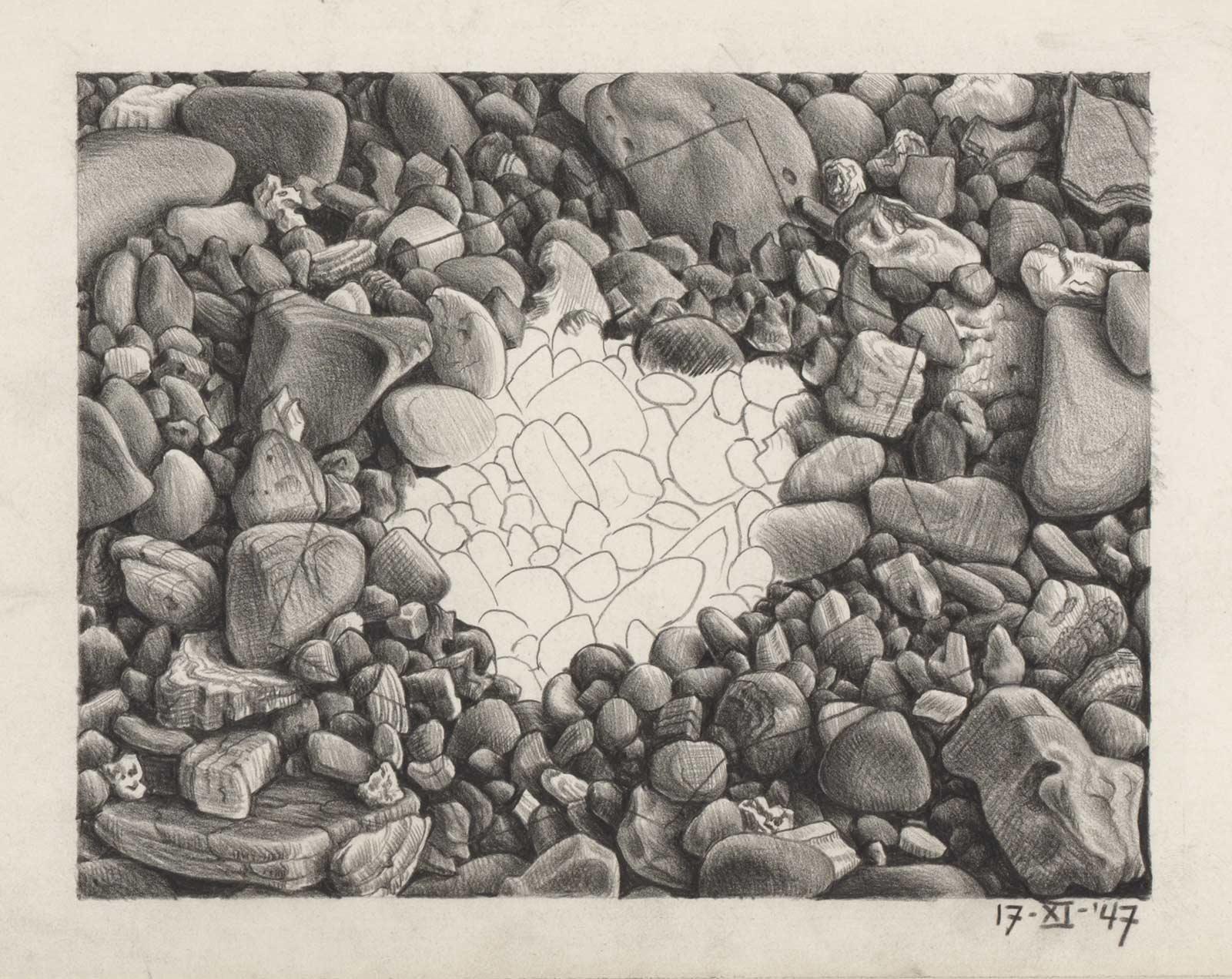
At the end of 1947 Escher sent a print of Crystal to Berend. His brother thanked him for that in a letter:**
'Emmy and I were delighted to receive a copy of your mezzotint Crystal. The transparency of the coalescence of cube and octahedron is a triumph of bright harmony against the somber background of shapeless gravel forms, devoid of symmetry. I presume this coalescence did not occur in tangible form before you, but that you constructed it. The distribution of light on the rear facets must have been quite a puzzle.'***
It is nice to read how Berend experiences the contrast between the bright harmony and the shapeless background. A background that is devoid of symmetry. The crystallographer in him is alert to the tragedy of objects that lack the regularity and perfection of a symmetrical shape.
Notes
[*] Wim Hazeu, M.C. Escher, Een biografie, Meulenhoff, 1998, page 310
[**] Wim Hazeu, M.C. Escher, Een biografie, Meulenhoff, 1998, page 323
[***] In order to depict the coalescence of cube and octahedron, Escher created a model of the form. He then copied this for the print.
More Escher today

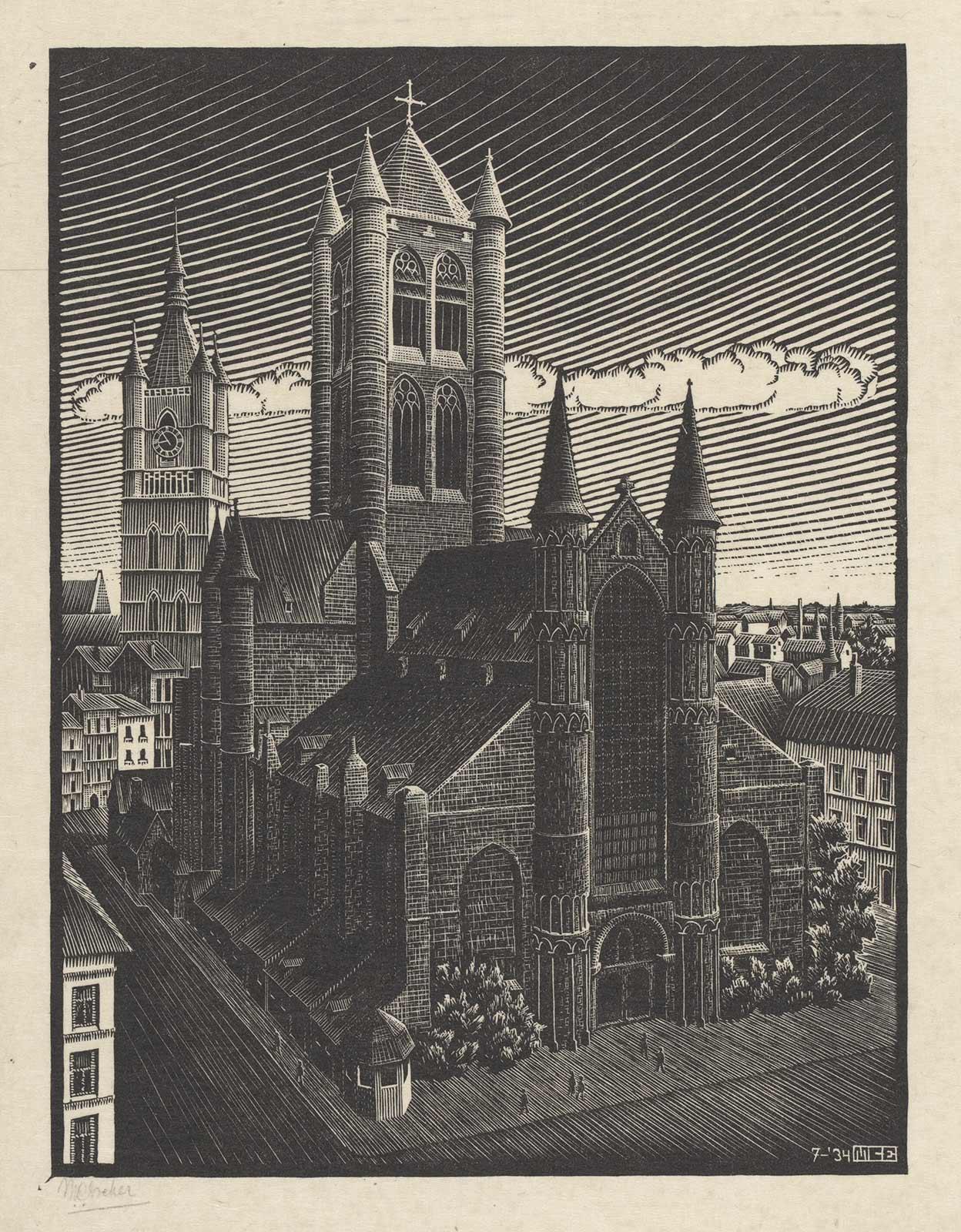
Saint Nicholas’ Church, Ghent
